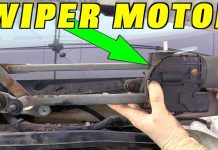Johnny Cash “walked the line” – and that’s pretty much Land Rover’s task, too. People expect LR vehicles to be leaders in off-road capability – as well as on-road civility. 
The two are not easy to reconcile.
It’s an especially acute challenge for Land Rover’s entry-level LR2. It’s the only Land Rover model not built on a heavy-duty truck-style chassis – and it’s the only Land Rover model that doesn’t come with a two-speed transfer case (and Low range gearing).
Is it still good enough off-road to not embarrass itself – and Land Rover? And is it good enough on-road to be competitive with popular (and newer-design) luxury-sport crossovers like the just-launched 2011 BMW X3?
WHAT IT IS
The LR2 is a compact-sized (five-passenger) crossover with standard full-time AWD.
Base price is$35,700.
WHAT’S NEW FOR 2011
MInor styling tweaks to the grille and tail-lights; otherwise the 2011 LR2 is pretty much the same as last year’s LR2. In fact, there haven’t been major changes to this model since 2008, when it made its debut as the replacement for the Freelander.
WHAT’S GOOD
Better off-road than most entry-luxury FWD car-based crossovers, including the Acura RDX.
Costs a lot less than a BMW X3 or Benz GLK.
Has Land Rover brand cachet.
WHAT’S NOT SO GOOD
Not as good on-road as RWD-based sport crossovers like the BMW X3, Benz GLK and Infiniti EX.
Absence of Low range gearing undercuts LR2’s off-road credibility.
It’s slow.
And it gets worse-than-average gas mileage, too.
UNDER THE HOOD
The ’11 LR2 is powered by a transversely mounted 3.2 liter in-line six rated at 230 hp connected to a six-speed automatic and a permanent all-wheel-drive system controlled by Land Rover’s driver-selectable Terrain Response system. It has four settings: General (for normal on-road driving), Grass/Gravel/Snow, Mud/Ruts and Sand.
Zero to 60 takes about 8.7 seconds – 2-3 seconds behind the more powerful (240 hp standard; 300 hp optional) BMW X3, 240 hp Acura RDX and 297 hp Infiniti EX35.
Gas mileage is – well, not very good: 15 city, 22 highway. Newer competitors like the Acura RDX, Infiniti EX35 and BMW X3 do better. Not by huge margins (17 city, 22 highway for the RDX, 17/24 for the EX and an anticipated 18-19 city/25-26 highway for the just-launched ’11 X3).
But nonetheless – better.
The LR2’s max tow capability is 3,500 lbs.
ON THE ROAD
Acceleration is probably the LR2’s greatest – most obvious – weakness.
The problem here is actually more about the passage of time than timeslips.
Back in 2008, when the current LR2 was introduced, its then-new 3.2 liter engine (jointly developed with Volvo) looked – and was – stout. The previous Freelander, which the LR2 replaced, had just 2.5 liters and 174 hp and was a known Dog that struggled to outrun mopeds. The ’08 LR’s bigger and much more powerful engine gave it much better performance than the model it replaced. The problem now is that three years have gone by and competitors like the RDX, EX35 and X3 (brand-new for 2011) have leapfrogged ahead of the LR2, whose 230 hp now looks – and is – nothing special in comparison. The new BMW X3, for example, can get to 60 mph in 5 seconds flat; the RDX does it in 6.8 seconds. It’s not even close.
The LR2 desperately needs another 20-40 hp at the least to catch up to the new Par in this segment.
Well, how about what people really buy Land Rovers for?
Given the car-type (FWD-based) layout and what appears at first glance to be a typical car-type (front-biased) AWD system, you’d be right to be skeptical. And cautious about subjecting the LR2 to anything more serious than snow – well-plowed snow, on a paved road.
No Low range? No way!
But the truth is the LR2 will go places and tackle terrain (including sand dunes) you’d be an idiot to dive into with the much-more-street-oriented competition such as the RDX and EX35 especially.
The LR2’s standard Terrain Response Control is pretty much the same system used in the known-tough LR3 and Range Rover. It uses electronic stability control, traction control and the ABS systems to keep the power flowing to the ground, not spinning the tires. Throttle tip-in is also regulated, so that even if you give it too much pedal for conditions, the system will automatically prevent too much power from being applied, too soon.
But the real key to the system is the Haldex center-coupling differential, which (as in a typical car-type AWD system) normally routes almost all the engine’s output to the front-wheels – but (and here’s the Big Difference) uses a hydraulically charged accumulator to immediately kick back power to the rear wheels, so the front wheels don’t slip at all.
Land Rover says the Haldex differential make sit possible to put every lb.-ft. of torque the engine produces to the ground at full throttle in just 150 milliseconds.
The shifting characteristics of the standard six-speed automatic also vary depending on the Terrain setting you’re in – and the type of driving you’re doing. This box offers both Standard and Sport settings, with manual shift control. The transmission even has a vent above the LR2’s “water line” (about 20 inches) in case you decide to become a U-boat commander.
The LR2 also comes standard with Gradient Release and Hill Descent Control, which use the ABS and traction control systems to inch the vehicle down a steep grade without the driver having to ride the brakes – or worry about the vehicle accelerating too rapidly and going “runaway.”
Ground clearance is 8.3 inches – higher up (by several inches) than all but the new X3.
Back in ’08 (when you could still fly without being gate raped and so I went) Land Rover took a bunch of us car journalists to Pismo Beach in California, where we took to the dunes in brand-new LR2s. My experience there showed me that the limiting factor was not the LR’s “light duty” AWD system – but rather the LR2’s stock tires. These are not M/S-rated and aren’t the hot ticket for off-road work.
Still, the LR2 bullied its way up steep sandy inclines, getting stuck only when the driver’s technique wasn’t up to snuff. Even then, no winching was required – just some words of advice on how to do it right from the off-road instructors Land Rover brought along for the ride.
A different driving style is required to get the most out of the LR2 off-road. The Terrain Response/stability control system is set up to give less yaw (side to side movement) and you have to get used to the more muted power delivery under hard charging, as when going up a slippery hill. Initially, you might feel the thing’s not gonna make it. It seems the computer is trying to slow you down by throttling back the power and pulsing the ABS to keep the wheels from spinning furiously. But then it just keeps on going and going. With some decent M/S-rated tires, the LR2 could probably go almost anywhere you’d take an LR3.
With a tighter steering box (2.4 turns, lock to lock) and revised suspension (including front and rear anti-roll bars) handling on-road is much better than the old Freelander, but not as tight as the EX35 or the new X3. Those two are hot rods on pavement (especially the EX35).
But the LR2 will still beat ’em both when the pavement ends.
AT THE CURB
The LR2 looks more like an SUV than the crossover it really is, which was probably intentional given Land Rover’s image. A rugged-looking bar grille finished in pewter metallic and fender air extractors – just like its big brother, the Range Rover – give it a suitably macho stance.
Another Range Rover-inspired LR2 feature is “command” (theater-style) seating for the back-seat occupants. The taller (boxier) roofline relative to the sleeker competition has a practical advantage, too – more headroom. The LR2 has 39.4 inches of backseat headroom – even with the sunroof – vs. 38.3 for the RDX, 38.4 for the EX35 and 39.1 for the BMW X3.
Rear legroom in the EX is also much more generous than in the Infiniti EX – 36.4 inches vs. 28.5 inches. The BMW has about the same (36.8 inches) and the Acura RDX slightly more (37.6 inches).
With the back seats in place, the LR2 has 26.7 cubic feet of cargo space; about 59 cubic feet with them folded down. This is still among the best in class despite the passage of time and three full model years. The EX35, for example, has just 18.6 cubic feet of cargo space behind its second row seats. The brand-new BMW X3 just barely beats the LR2, with 27.6 cubic feet.
Likewise the Acura RDX (27.8 cubic feet).
THE REST
All LR2s come standard with a large dual-section panorama sunroof, keyless ignition, bi-xenon headlights, adaptive lighting, rain-sensing wipers, park distance control, perforated leather seats and a top-drawer nine speaker stereo with six-disc changer and MP3 capability. However, to get satellite radio you’ll need to upgrade to the HSE package, which also gets you Bluetooth wireless and Adaptive headlights.
On the other hand, Land Rover permits buyers to order navigation by itself, as a stand-alone option – which is a nice departure from the usual (in competitor models) practice of making you upgrade to a more expensive trim – or buy a whole slew of other features and equipment to get the one thing (GPS) you do want.
Another thing the LR2 offers that other vehicles don’t is a heated front windshield. (Again, just like the LR3 and Range Rover have.) It’s as welcome in the winter as thermal underwear – and does a much better, much faster, job of clearing away ice that’s built up on the front glass than the blower-defroster only deal you get in other vehicles.
It’s part of the Climate Comfort Package, which also includes heated windshield washer jets and heated front seats.
THE BOTTOM LINE
The LR2 still has the edge when the pavement ends – but it needs more gumption under the hood to keep up with the latest stuff coming out, especially the new X3.
Throw it in the Woods?









